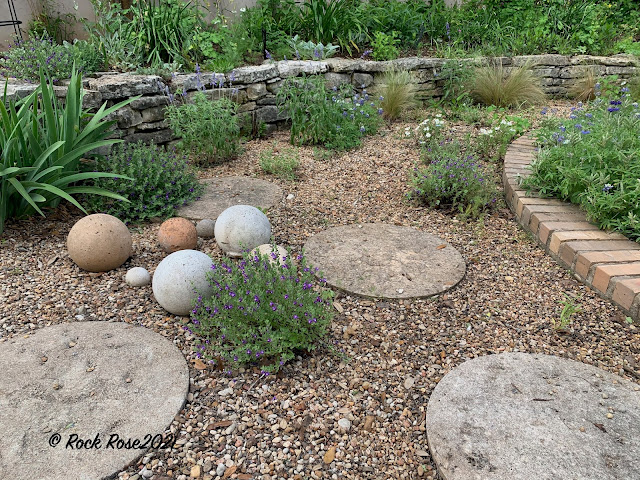Although I am grateful for the current rain this week I would like to escape back to the wonderful sunny, dry desert. I shall just have to enjoy the photographs and memories from our recent 10 days visit. Or should I say 6 days because it took 2 days to drive the 1000 miles to Ahwatukee, where our son and family live, with an overnight stop in El Paso. We spent Sunday with the family and on Monday morning we headed to the Desert Botanical Garden. I had called ahead to reserve an early morning spot courtesy of our reciprocal membership program with the Lady Bird Johnson Wildflower Center.
If you haven't seen the Palo Verde trees in bloom then I must tell you they are a sight to behold.
All along the roadsides from Tucson to Phoenix just a mass of yellow blooms.
And I thought my retama trees were a show-stopper. (Recently removed since they died in the severe freeze). The bark of the Palo verde is green and is used by the tree to photosynthesize. This way the leaves can remain small, meaning they will transpire less in the heat and dry desert atmosphere.We have been to this garden many times and although we see some changes from year to year much of the structure and plant content has not changed much from our last visit. Nevertheless I always say when we walk in "This is the best garden I know"! I will admit those palo verdes had me won over on this occasion. That and some of the cactus in flower.
Should I complain about the fact that my prickly pear blooms are always yellow.
Or even sitting there and drinking in the cooler morning desert air. Yes. Everyone was wearing masks.
Out on the trails there were a few saguaros including this crested beauty.
And this rather unusual one made from axe heads.
As with many public gardens there are often temporary art displays. This one titled, The Earth Has Been Good To Us, by the artist Mashford Kanyemba, carved from Shona Opal Stone.
and Lonely Flight, by Lawrence Mukomberanwa, also carved from Shona Opal Stone.
I could have snap, snap snapped a hundred photographs with my phone but for once I decided to enjoy the garden as most visitors do and walk around and drink in its beauty. You can read about my previous visits to the garden Desert Botanical Garden Visits Looking back I think I need to get my camera out again!
Stay tuned for posts about visit to the Lost Dutchman State Park, the Saguaro National Park and Tucson Botanical Gardens.












































